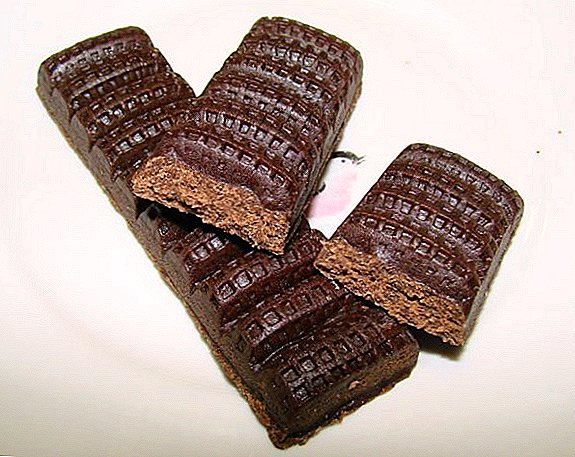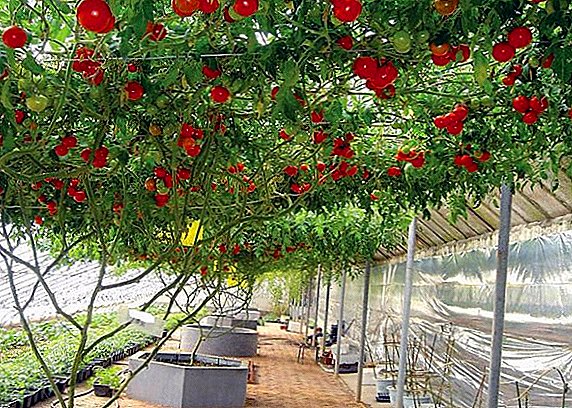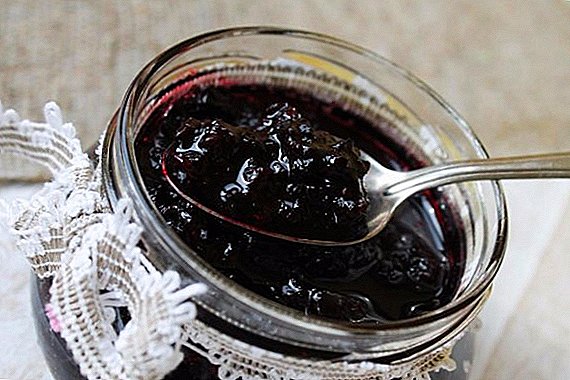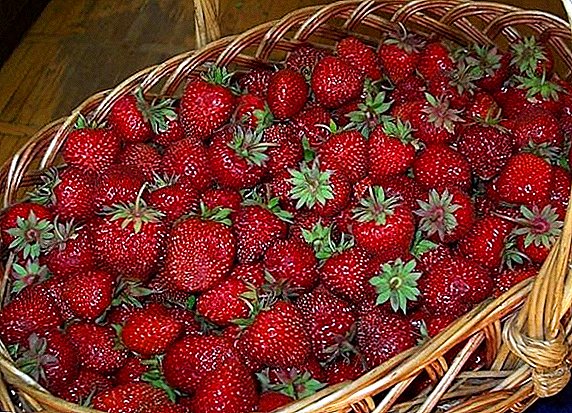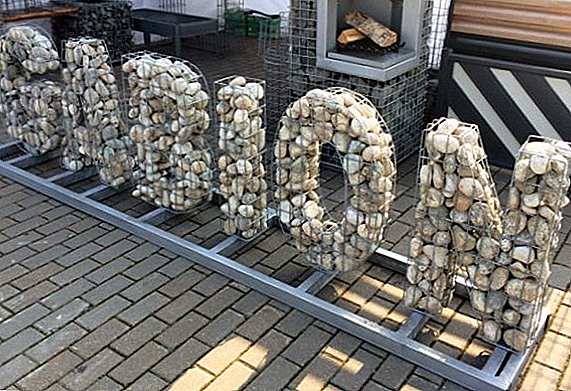 In modern landscape design, new techniques and methods are constantly emerging to decorate the yard of the summer cottage. At the moment, gabions are very popular, which landscape designers use not only as decoration, but also as an element that has a practical purpose. It may seem that such an element of decor can not be made by hand, as it is a complex structure that requires accuracy and dexterity. But in reality, there is nothing complicated in gabions, so we will take a closer look at what it is, what it is used for, how it can be done at home.
In modern landscape design, new techniques and methods are constantly emerging to decorate the yard of the summer cottage. At the moment, gabions are very popular, which landscape designers use not only as decoration, but also as an element that has a practical purpose. It may seem that such an element of decor can not be made by hand, as it is a complex structure that requires accuracy and dexterity. But in reality, there is nothing complicated in gabions, so we will take a closer look at what it is, what it is used for, how it can be done at home.
What are gabions and their purpose
Gabions called special metal mesh structures filled with stones or rubble.  Gabions are used for:
Gabions are used for:
- strengthening of water bodies, such as a river, pond, etc .;
- creating supports to protect the slope from collapse;
- regulation of river channels;
- soil protection from erosion, as well as from the occurrence of landslides;
- avalanche protection;
- decorative arrangement of the suburban area and places for recreation;
- construction of fences and fences;
- protect areas from the wind.
Did you know? The gabions, which are now more often performing the function of decorating the courtyard, were originally invented in order to build protective redoubts during military operations.
Varieties
Gabions differ in size and purpose. Their installation does not require the arrangement of the foundation.
The main differences in gabions are frame structures, which are:
- box-shaped. If we take into account the height of the construction, then this type of frame is made of mesh or welded from twigs. This type is often used to decorate the site or territory of recreation areas;
- flat or mattress. These structures are quite low and wide. Mattress gabion is often designed for large-scale construction, to strengthen the banks of the pond or areas on the slope;
- cylindrical. This type is intended to create supports for the placement of garden furniture or as separate elements of the decor;
- arbitrary. It is not necessary to adhere to the banal, already well-known forms of skeletons, you can come up with something special, exclusive, which no one else will have, and bring it to life.




What is made frame
Companies engaged in the production of gabions, most often tend to use galvanized wire having a coating density in the region of 250-280 g / sq. m. This is a fairly dense wire: it can not be compared with the most ordinary "ribs", which are actively used for the construction of various fences. Also, wire instead of galvanized may have a PVC coating and be from 2 to 6 mm in thickness.  The containers that will be used for these structures must be very strong in order to withstand a heavy load under heavy filling, so they are made in the technique, which implies double wire torsion.
The containers that will be used for these structures must be very strong in order to withstand a heavy load under heavy filling, so they are made in the technique, which implies double wire torsion.
Important! The mesh must have cells made as regular polygons in order for the gabion to hold well and be durable.
What can you fill
The choice of filler should depend on the size of the frame so that it does not fall out through the cells and holes in the grid, as well as on where you plan to place the structure.  The frame for the gabion can be filled with artificial rough stone or natural stone.
The frame for the gabion can be filled with artificial rough stone or natural stone.
Presently The most popular are volcanic stones of solid rocks., such as:
- granite;
- quartzite;
- basalt;
- diorite.
The most common, but no less popular filler is sandstone.
From stones and various plants in the country you can create beautiful compositions: a dry stream, rock arias, an alpine slide.
You can use for filling structures of all kinds of stony rocks that are resistant to strong frosts and strong enough.
If you are building gabions in order to decorate the plots, then for this purpose alternative materials, such as:
- glass;
- wooden cuts;
- pieces of pipes;
- broken tiles;
- brick;
- paving stone;
- crushed concrete.
 If you want the gabions to merge with the local landscape, then it is recommended to fill them with natural stone that matches the area. For example, large pebbles, crushed rubble, rounded boulders are well suited as a natural filler. If you choose the right filler, it will allow you to complete the picture so that everything fits together as harmoniously as possible.
If you want the gabions to merge with the local landscape, then it is recommended to fill them with natural stone that matches the area. For example, large pebbles, crushed rubble, rounded boulders are well suited as a natural filler. If you choose the right filler, it will allow you to complete the picture so that everything fits together as harmoniously as possible.Important! If you want to emphasize, highlight or pay attention to your gabion, then you need to take care of planting a lawn or laying asphalt on all sides of the structure.
Location
Considering that gabions have become quite popular in landscape design, it is important to decide where to place them if you decide to decorate the yard yourself.  When choosing a place, it is necessary to take into account that such structures look quite cumbersome and rough, so you should take care of the flowers and greenery with which you can dilute the composition.
When choosing a place, it is necessary to take into account that such structures look quite cumbersome and rough, so you should take care of the flowers and greenery with which you can dilute the composition.
You can also make beds of gabions, to simultaneously decorate the yard, and update the old design of the site.  Gabions can be placed on the territory as fences or partitions. Also, these structures often strengthen the slopes to prevent collapse.
Gabions can be placed on the territory as fences or partitions. Also, these structures often strengthen the slopes to prevent collapse.
Facilities are used to decorate parks, playgrounds, which are presented in the form of a variety of animal figures, cartoon characters or simply geometric figures.
Often decorate with gabions pools or install them near artificial reservoirs.  Gabions can be used as a structure for a rest area, where to provide a table that can be filled with any available stone, and around it to build square frames that serve as chairs.
Gabions can be used as a structure for a rest area, where to provide a table that can be filled with any available stone, and around it to build square frames that serve as chairs.
It is easy to make a dacha plot cozy and comfortable for rest: build a gazebo, a pergola or just a bench on it, and also decorate it with hand-made articles.
Sometimes such constructions are used in order to ensure good protection of arbors from warming.
Despite the fact that the construction is considered to be sufficiently durable, stones used for gabions have a space between them through which water will leak, preventing its accumulation in the gazebo and warming. 
Materials and tools for work
Tools and materials that will be used for the construction of the gabion:
- Very durable galvanized mesh. Its choice depends on the size of the structure: the more gabion there is, the stronger the mesh will be. Now they produce a special grid for such structures, which has hexahedral cells, but you can also purchase a regular grid, which has rectangular cells.
- Also sometimes for buildings use a rabbit, but it should be borne in mind that such a construction will not serve you for a long time.
- Wire clamps or staples, which are required in order to fasten the frame parts. They should be selected under the frame itself, i.e., purchased galvanized, so that the attachment points do not rust prematurely, and the structure does not collapse.
- Thick black film, sand or geotextile in order to enclose them under construction.
- Pebbles, stones, broken brick or any other filler, which is planned to fill the frame.
- Armature, if you plan to build a large structure - for small structures it is not required.
- Spade, pliers, tape measure.

Step-by-step manufacturing and installation process
In order to learn how to make high-quality gabions, you should first practice on small structures, for example, build a flower bed. Consider the device gabion as an element in landscape design on the example of flower beds, as well as manufacturing technology with photos.
Did you know? The word "gabion" is French, although it is more often used by the Spaniards, and has the literal translation of "big basket".
Step by step instructions on how to make a gabion with your own hands:
- Determine how wide the structure will be. If you plan to build a small flower garden, it will be enough 30 cm. In order to simplify installation, the height should be measured the same, so that the result will be a frame of 30 by 30 cm.
- Flowerbed, which will be fenced, should be marked with a strip (40 cm wide). In this place it is necessary to level and compact the ground well.
- In order that weeds and vegetation of the flowerbeds do not break through the gaps between the stones, the base should be treated with geotextile, which should be laid a little wider than the structure itself will be.
- Cut the acquired grid into 30 cm strips, and the length - depending on the length of the planned fencing of the flower bed. Each side will require 4 strips and 2 squares to close up the butt. Such a structure is able to close one side of the flower bed: accordingly, in order to fully protect the flower bed, 4 boxes are needed.
- Now, when the workpiece is cut, you should proceed to the assembly of the structure. To do this, lay one strip on the ground, then perpendicularly install the walls one after the other and attach them with galvanized clamps or wire. Perform this manipulation from the inside of the structure to maintain a neat appearance of the structure. Take off the excess part of the clamp with pliers.
- In the same way, fasten the ends of the structure. Leave the upper part open at this stage.
- When you build all 4 boxes, you can begin to fill them. To do this, go to sleep and carefully shake the box so that the stones fit snugly together. After filling all the boxes, you can fasten the upper part.
- Geotextiles, which protrude beyond the limits of the design, are recommended to decorate with small pebbles or other decoration elements.





Learn how to make a beautiful flower bed of tires and stones.
Useful tips
To make it easier for you to build a gabion yourself, we recommend that you familiarize yourself with some useful notes:
- When gabions are constructed sufficiently large, it is necessary to provide several sectional compartments that will prevent the content from protruding from the walls of the grid during its loading into the frame.
- When constructing individual ducts, they should be bonded to the monolith with wire. In this case, you should pay attention to the type of wire, so that the frame itself is made of the same type as the fastening elements. If you choose a cheaper analogue, you can provoke a deformation of the structure, as well as its rapid destruction.
- If it is planned to construct a surface structure, then it should be filled with stone so that the fraction size exceeds the cells in the grid by a third.
- If the structure is under water, then the stone should be used larger, so that it is half as large as the cell in the grid.
Thus, it will not be difficult to build a gabion at home, the main thing is to follow the instructions and recommendations for the work.


